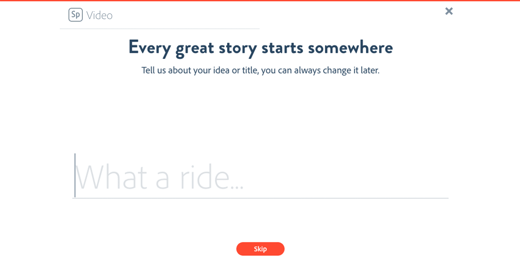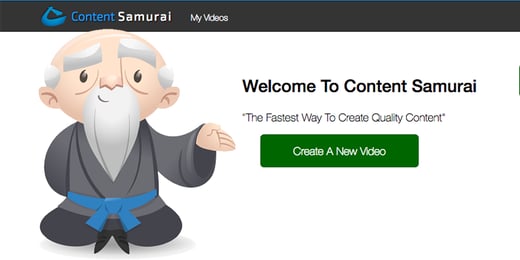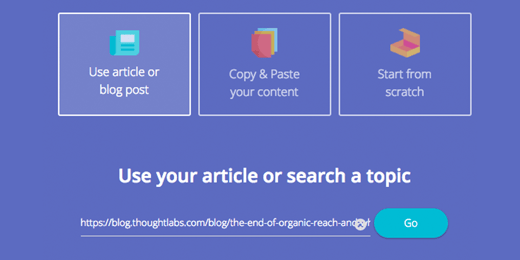A social media competitive analysis is a powerful tool that is commonly used to create a set of benchmarks against competitors within your industry, and by freelancers and agencies to help demonstrate how effective their guidance has made their clients in comparison to the key players in their industry.
However, you don't have to stop there. A competitive analysis of similar social media channels can also teach you a lot about your competitors' strategy, goals, and who exactly they're marketing to.
Once you have this deeper understanding of your competitors, you can compare their strategy to your own and examine what they are doing effectively (and not so effectively), why that is, and whether this presents an opportunity for you.
So, what should you be doing to take your competitive analysis to the next level so you can gain deeper insights from what your competitors are doing? Just use these 5 questions as a checklist when you're doing your next competitive analysis.
1. Which topics do they cover?
What are your competitors talking about most? Their wider industry, their own company, common questions from customers, or something more conversational?
The key things you want to understand here are:
- Which topics are working well for them, and are those relevant to your strategy?
- Why is that content working well for them? Do they seem to be promoting certain content to drive more clicks and engagement? Is there a certain topic that drives more useful interactions than others?
- Is there something unique about how they're positioning their content in their posts? Are their posts short and to the point, or maybe they start out with an exciting title? Do they use a lot of eye catching images that stand out in the feed on their embedded links?
Pro Tip: Be on the lookout for bitly links. If one isn't in the post text, hover over the embedded link to see if it was posted using a link shortner. Bitly links, along with some other link shortners as well, expose analytics data on how many clicks a link received to the public, just add a "+" to the end of the link to see this data.
This data is also segmented by how many clicks were driven through all bitly links to that page, and how many were driven from the specific link you found.
2. What is their tone and voice?
One mistake many marketers make when doing a social media competitive analysis is to focus too much on tactics. You also want to take a high level look at the tone and voice your competitors and brands that are similar to yours are using.
You want to be on the lookout for the type of language they use:
- Is it full of jargon and written for someone who already has a lot of knowledge of their space?
- Or is it written to help someone with almost no knowledge of their company, products, or industry get up to speed quickly on what they're talking about?
- Is the language they use focused on education, showcasing their company as a great place to work, selling their products and services, or telling the company's story?
Pro Tip: There's a lot more to a brand's voice and tone than what I've covered above. If you'd like the deep dive on what voice and tone are, how to classify them, and why they matter, this explanation of social media voice and tone from Buffer breaks it all down for you.
These insights will provide clues to help you figure out the answer to your next question...
3. Who are they targeting?
By examining the topics your rivals are talking about and the tone and voice which they use to approach these subjects you can figure out who they're targeting and also whether a similar strategy makes sense for you.
- For a B2C brand very simple language with limited jargon could be targeted towards consumers who are unfamiliar with the products and services the company offers.
- For a B2B brand this type of content could be targeted towards someone in the C-suite who needs a high-level overview of the problem and solutions without getting into too many of the technical details.
- The topics and how they're covered will give you more clues. If the content they share is at a very high level this suggests they're writing for senior managers or consumers that aren't familiar with their offerings yet, if the content dives deep into the topic, this is another clue that they're targeting consumers who are already well-educated about their products and services (perhaps people who are further along in the buyer's journey?), or for a B2B brand, they could be targeting individual contributors who do the hands on work and have an in-depth knowledge of how the work related to their products and services is done.
Pro Tip: You shouldn't assume that one brand's audience will be the same for every social media platform. The same brand may target people at different levels of experience across platforms or even use two platforms for completely different goals, such as reaching customers on Facebook or LinkedIn and showcasing their unique work culture and courting potential recruits on Twitter or Instagram.
4. How are they being covered by third parties?
For many brands their content strategy extends beyond their own social media channels.
Whether this is a relationship with smaller bloggers and influencers who are talking about their offerings to their own targeted audiences or coverage in top-tier media sources, it's worth taking a look to understand how your competitors are being positioned by the media or how they're positioning themselves through guest blogging or influencer marketing.
You should try to figure out:
- What are they using third parties to promote? Is it the CEO/owner's vision for the company, a flagship product, a wider discussion of their industry, or something else?
- How does this fit into their overall strategy as you understand it so far? Does this complement it, fill a gap, or does it overlap in some way? At which stage in the buyer's journey is this content written for? Who is it written for?
- What type of media outlets are talking about them and how are they getting this coverage? Is it industry bloggers or large media outlets? Do they have a PR team that is collaborating with their social team? Are they doing outreach to influencers via social media?
Pro Tip: Pay attention to the authors of third party content written about a brand. If it isn't apparent who they work for, take a second to look them up on LinkedIn. The author isn't always a third party, it could also be a guest post by someone who works for that company. This is also interesting, but you will want to separate your analysis of guest posts on other blogs and niche sites from how the company is covered by outside sources.
5. What is their message?
The brands with the best content strategies will have a consistent message that fits into an overall narrative about that company, their brand story.
- This message will often relate to the company's history, for B2B brands it's often how they got started in their industry, what their qualifying background was before the company was launched, and what they offer that makes their team unique and the best choice. It could also extend to the company's culture and highlighting the teams that work within the company, especially if a brand is leveraging social media to showcase their company in hopes of attracting the best and brightest recruits in their industry.
- For a B2C brand this message may relate more to the product they're selling and the type of lifestyle it provides than the company and the people behind the product.
- Pay attention to how effectively each brand conveys their messaging and brand story across their website, blog content, and social media properties. While you definitely don't want to duplicate their story and messaging (it just wouldn't be authentic or unique), you may find some inspiration for how you could be better positioning your own brand by looking at competitors and best in class brands that are similar to your own company.
Pro Tip: You may not see the immediate tactical value in this type of analysis, but developing a consistent message and helping your customers identify with who your company is, what they do, and what your team is passionate about are all very important ingredients for building customer loyalty.
Don't neglect forming your own consistent, unique, and authentic message that your customers will identify with.
Dec 6, 2015


